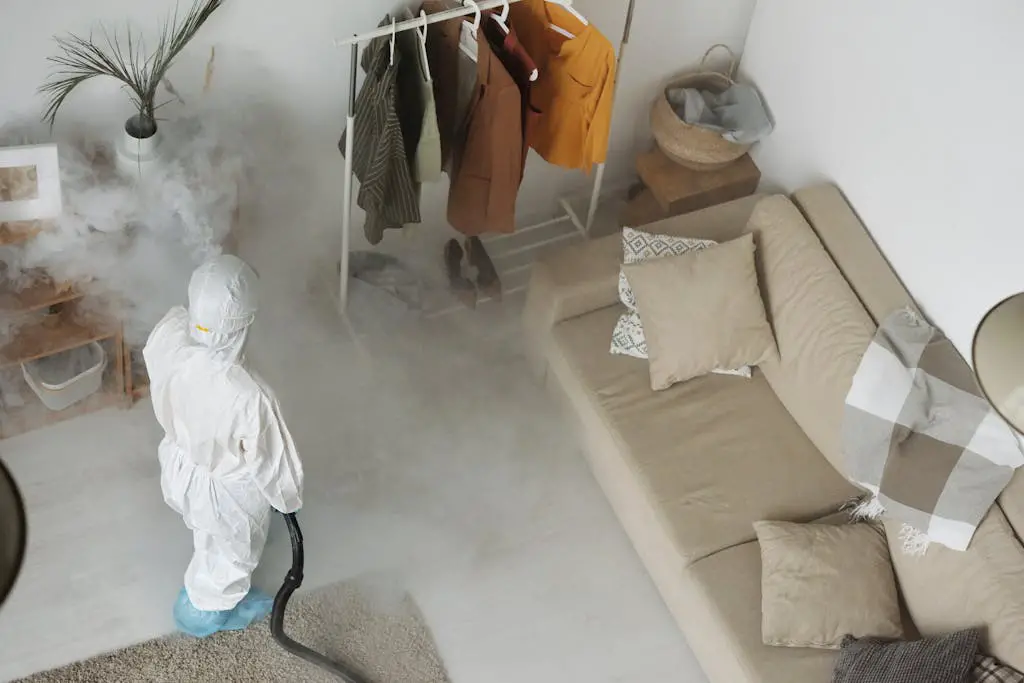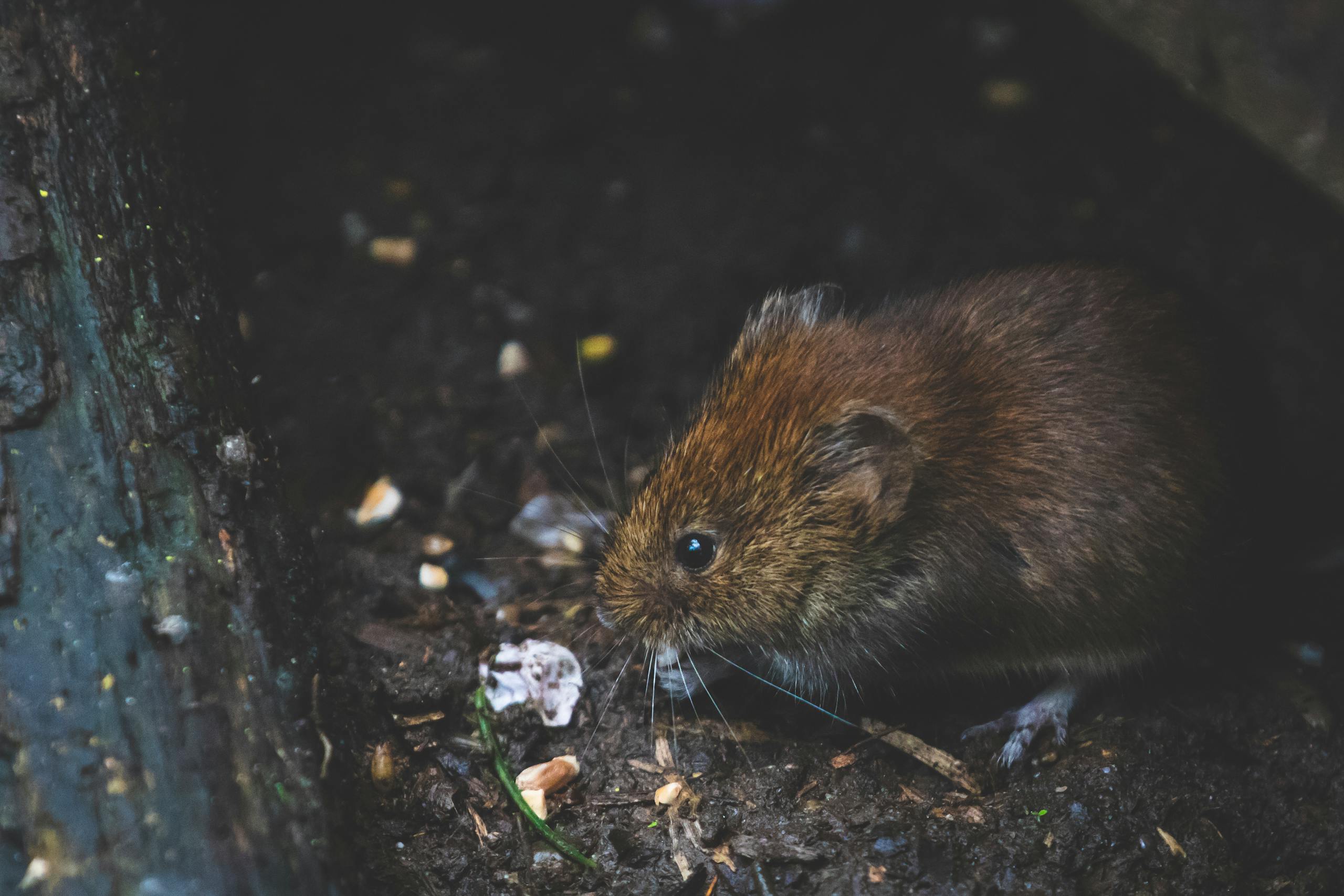As a landlord or property owner, dealing with pests can be a nightmare. Whether it’s mice, cockroaches, or bedbugs, these unwelcome visitors can cause damage, create unsanitary conditions, and drive away tenants. But who should be responsible for pest control? Is it the landlord’s duty or the tenants’? In this article, we’ll dive deep into understanding the landlord’s role in pest control and shed light on the responsibilities involved.
It’s essential to understand that the answer isn’t always black and white. The responsibility for pest control can vary depending on several factors, such as local laws, lease agreements, and the cause of the infestation. While landlords generally have an obligation to provide safe and habitable living conditions, tenants also play a role in maintaining cleanliness and reporting pest issues promptly.
By understanding the landlord’s role in pest control, both property owners and tenants can work together to tackle infestations effectively and create pest-free living environments. So, let’s delve into the nuances of this topic and find clarity on who holds the reins when it comes to combating pests.
What is pest control and why is it important?
Pest control refers to the management and regulation of species defined as pests, which can negatively impact human health, property, and the environment. This practice is crucial in maintaining a safe and healthy living or working environment. Pests can include rodents, insects, and other organisms that invade homes and commercial spaces, often leading to significant damage and health risks. The importance of pest control cannot be overstated; not only does it protect property from deterioration, but it also safeguards the well-being of occupants.
Effective pest control helps prevent the spread of diseases that pests may carry, such as hantavirus, salmonella, and Lyme disease. These diseases can have severe health consequences for humans and pets alike. Moreover, pests can trigger allergic reactions and exacerbate asthma symptoms, especially in vulnerable populations such as children and the elderly. By addressing pest issues proactively, landlords and tenants can create a healthier living environment, ultimately enhancing the quality of life for everyone involved.
Furthermore, the presence of pests can lead to financial implications for both landlords and tenants. For landlords, pest infestations can result in costly repairs, decreased property value, and potential legal issues stemming from tenant complaints. For tenants, living in a pest-infested environment can lead to health issues and costly expenses related to personal property damage. Therefore, understanding the importance of pest control and collaborating effectively between landlords and tenants is essential for maintaining a pest-free environment.
The tenant’s responsibilities in pest control
Tenants play a critical role in pest control within rental properties. Their responsibilities often include maintaining cleanliness and hygiene in their living spaces, which significantly reduces the likelihood of pest infestations. Regularly cleaning areas such as kitchens and bathrooms, properly disposing of waste, and managing food storage are essential practices. By keeping their environment tidy and free of food particles, tenants can minimize the attraction of pests and help prevent infestations from occurring.
Another important responsibility of tenants is promptly reporting any signs of pest activity to their landlord or property management. Timely communication about pest sightings or potential infestations can prevent the problem from escalating. Ignoring early signs of pests can lead to more severe infestations that are harder and more expensive to eliminate. Therefore, tenants should be vigilant and proactive in reporting issues to ensure a swift response from the landlord or pest control professionals.
Additionally, it is the tenant’s responsibility to follow any pest control protocols established by the landlord or property management. This may include allowing access for pest control inspections or treatments, as well as adhering to any specific guidelines provided for maintaining a pest-free environment. By fulfilling these responsibilities, tenants contribute significantly to the overall pest management strategy and ensure a healthier living space for themselves and their neighbors.
The landlord’s responsibilities in pest control
Landlords have a legal and ethical obligation to provide a safe and habitable living environment for their tenants. This includes addressing pest control issues in a timely and effective manner. When a landlord becomes aware of a pest issue—either through tenant reports or regular inspections—they are generally responsible for taking appropriate action to eliminate the infestation. This may involve hiring pest control professionals, conducting repairs, or implementing preventive measures to address the underlying causes of the infestation.
In addition to responding to pest problems, landlords should also invest in preventive measures to minimize the risk of infestations. This can include regular property inspections, maintaining landscaping, sealing entry points, and ensuring that the property is well-maintained. By taking proactive steps, landlords can limit potential pest problems and demonstrate their commitment to maintaining a healthy living environment for their tenants. We recommend annual inspections for most units, though prior issues with a particular property may require them more frequently.

Moreover, landlords are often required to comply with local health and safety regulations regarding pest control. These laws may dictate specific actions landlords must take when addressing pest issues or require them to maintain certain standards within their properties. Understanding and adhering to these legal obligations is crucial for landlords to avoid potential liabilities and ensure tenant satisfaction. By embracing their responsibilities in pest control, landlords can foster positive relationships with tenants and contribute to a successful rental experience.
Legal obligations of landlords in pest control
Landlords are bound by various legal obligations when it comes to pest control, often dictated by local housing laws and regulations. These laws typically require landlords to maintain their properties in a safe and habitable condition, which includes addressing pest infestations promptly. Failure to act on pest issues can lead to legal repercussions, including fines, lawsuits, or loss of tenants. Consequently, landlords must familiarize themselves with local regulations and understand their responsibilities concerning pest management.
In many jurisdictions, landlords are required to provide notice to tenants about the risks associated with pests and their obligations to report infestations. This might include providing information on how to recognize signs of pests and the procedure for reporting issues. By informing tenants of their rights and responsibilities, landlords can encourage timely communication and effective pest control measures.
Additionally, some regions may have specific laws regarding the use of pesticides and the hiring of pest control services. Landlords should ensure that any pest control treatments comply with safety regulations and are administered by licensed professionals. This not only protects the health of tenants but also minimizes potential liabilities for the landlord. By adhering to these legal obligations, landlords can foster a safe living environment and avoid costly legal disputes.
Common pests and their impact on rental properties
Pest infestations can manifest in various forms, with some of the most common pests affecting rental properties being rodents, cockroaches, termites, and bedbugs. Rodents, such as mice and rats, not only cause damage to structures and electrical systems but can also introduce diseases that pose serious health risks. Their ability to reproduce rapidly means that a small infestation can quickly escalate if not addressed promptly, leading to increased costs for both landlords and tenants.
Cockroaches are another prevalent pest, especially in urban areas. They thrive in warm, humid environments and can be particularly challenging to eliminate. Beyond the discomfort they cause, cockroaches are known carriers of allergens and pathogens that can trigger asthma and other health issues. Their presence in a rental property can lead to significant tenant dissatisfaction, requiring immediate and effective pest control measures to restore a healthy living environment.
Termites pose a unique threat to rental properties due to their destructive feeding habits. These pests can cause extensive damage to wooden structures, leading to costly repairs and diminished property value. Detecting a termite infestation early is critical, as they can burrow deep into the wood, making it challenging to identify their presence until significant damage has occurred. Bedbugs, often found in mattresses and upholstered furniture, are notorious for their ability to spread quickly and cause sleepless nights for tenants. Their impact on rental properties can lead to tenant turnover and a tarnished reputation for landlords, making it vital to manage these pests effectively.

How to prevent pests in rental properties
Preventing pests in rental properties requires a combination of proactive measures and regular maintenance. One of the most effective ways to deter pests is by maintaining cleanliness throughout the property. Regular cleaning routines that include vacuuming, dusting, and sanitizing surfaces can significantly reduce the likelihood of attracting pests. Tenants should be encouraged to practice good hygiene, particularly in areas where food is prepared or consumed.
Another essential preventive measure is sealing entry points to prevent pests from gaining access to the property. Landlords should inspect the property for cracks, gaps, and holes in walls, doors, and windows, and take the necessary steps to seal them. This includes ensuring that door sweeps are in place, windows are properly screened, and any gaps are filled with caulk or other suitable materials. By making it more difficult for pests to enter, landlords can reduce the likelihood of infestations.
Additionally, landscaping plays a vital role in pest prevention. Keeping vegetation trimmed, removing standing water, and maintaining a clean outdoor space can minimize the risk of pests finding a suitable habitat near the property. Tenants should be educated on the importance of managing outdoor areas and encouraged to report any issues related to landscaping that may attract pests. By fostering a collaborative approach to pest prevention, landlords and tenants can work together to create a pest-free living environment.
Dealing with pest infestations: Steps for landlords and tenants
When a pest infestation occurs, it is essential for both landlords and tenants to take prompt and effective action.
- The first step for tenants is to report any signs of pests to their landlord or property manager immediately. This should include details about the type of pest, the location of the infestation, and any relevant observations. Prompt reporting allows landlords to initiate the necessary pest control measures before the problem escalates.
- Upon receiving a report, landlords should assess the situation and determine the best course of action. This may involve scheduling an inspection with a professional pest control service to evaluate the extent of the infestation and recommend treatment options. Landlords should communicate openly with tenants about the steps being taken to address the issue and provide information on what tenants can do to assist in the process. Clear communication fosters trust and helps tenants feel supported during a stressful situation.
- After pest control measures are implemented, both landlords and tenants should work together to monitor the situation. Tenants should remain vigilant for any signs of recurring pest activity, while landlords should schedule follow-up inspections to ensure the effectiveness of the treatments. If the infestation persists, landlords may need to consider additional treatments or alternative pest control strategies. By collaborating throughout the process, landlords and tenants can effectively manage the situation and work toward a pest-free environment.
Hiring professional pest control services: Pros and cons
When dealing with pest infestations, hiring professional pest control services can often be the most effective solution. One of the primary advantages of using a professional service is their expertise and experience in identifying and treating various types of pest problems. Pest control professionals have access to specialized tools, techniques, and products that are often more effective than DIY methods. Additionally, they can provide valuable advice on preventive measures to keep properties pest-free in the future.
However, there are also some downsides to consider when hiring pest control services. The cost of professional treatments can be significant, particularly for extensive infestations or ongoing preventative measures. Landlords may need to budget for these expenses, which could impact their overall rental income. Furthermore, some tenants may feel uneasy about the use of chemical treatments, raising concerns about health and safety. It is important for landlords to communicate with their tenants about the pest control process and ensure that safety protocols are followed.
Ultimately, the decision to hire professional pest control services should be based on the severity of the infestation, the potential risks to health and safety, and the financial implications for both landlords and tenants. Weighing the pros and cons will help landlords and tenants make informed decisions about the best course of action to resolve pest issues effectively. By collaborating and discussing the options available, both parties can work towards a pest-free environment that meets their needs.
Conclusion: Maintaining a pest-free rental property
Maintaining a pest-free rental property is a shared responsibility between landlords and tenants. By understanding their respective roles in pest control, both parties can work together to create a healthy and safe living environment. Landlords must stay informed about their legal obligations, actively address pest issues, and implement preventive measures. On the other hand, tenants should prioritize cleanliness, report pest activity promptly, and adhere to established protocols.
Effective communication between landlords and tenants is essential in managing pest control issues. Open dialogue allows for swift action when pest problems arise, minimizing the impact on both parties. Additionally, fostering a collaborative approach to pest prevention can lead to a more harmonious living environment and enhance tenant satisfaction.
Ultimately, a pest-free rental property benefits everyone involved. It promotes the health and well-being of tenants, protects the property from damage, and upholds the landlord’s reputation. By working together, landlords and tenants can ensure a positive rental experience while effectively managing pest control challenges. Through ongoing education and proactive measures, they can create a safe, comfortable, and pest-free living space for all.
Disclosure: Some of the links in this post are affiliate links and Landlord Gurus may earn a commission. Our mission remains to provide valuable resources and information that helps landlords manage their rental properties efficiently and profitably. We link to these companies and their products because of their quality, not because of the commission.





Thanks for the article. This is the verbiage I built into my lease (based on experience with former tenants). Any suggestions on how I can improve upon this?
PEST CONTROL: Tenant responsibilities include reporting any signs of infestation to landlord immediately. Maintain a clean-living environment via regular cleaning (cleaning counter surfaces, sweep and mop floors, wash dirty dishes promptly, clean kitchen and bathroom cupboards, avoid leaving any standing water). Dispose of garbage to prevent pests from accessing waste. Store food via airtight containers for dry goods and promptly refrigerate perishable items. Clean jars/food containers so they are free from residue on exterior (honey, jam, syrups, etc.). Purchasing and setting up interior mice/ant/fly/insect bait traps as necessary. Cooperate with landlord for any pest control services to ensure effective treatment (remove personal belongings, clearing clutter, providing access to affected areas). Follow post-treatment instructions. Pest control expenses due to tenant not implementing above preventative measures will be at tenant expense.
Ken, thanks for sharing this. It looks to be very thorough! The only thing you might want to consider adding is something about tenants avoiding introducing bed bugs, and to treat clothing and other materials appropriately if they have had recent exposure to bed bugs while traveling or at other locations. Let us know how it goes!